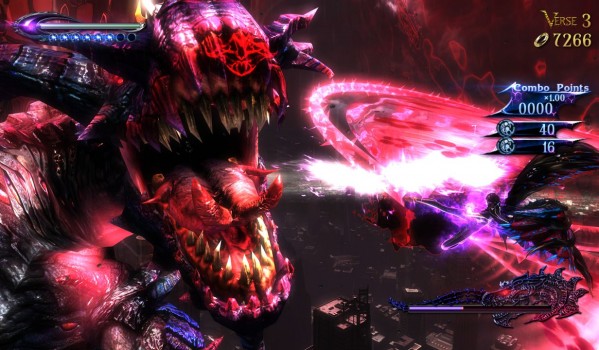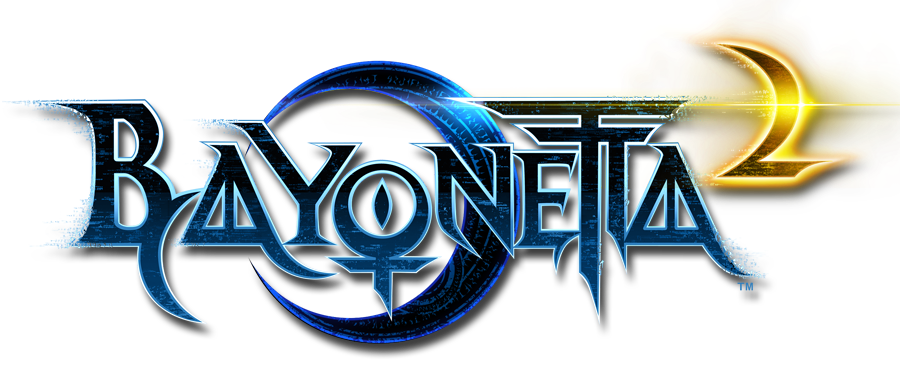Last updated on November 19, 2015
Expectation’s a b—h, isn’t it? Sorry for my racy pun…
To say I looked forward to Bayonetta 2 represents something of an understatement. Given my unadulterated love for the first game, already conveyed in written text form, just hearing the announcement of the game brought with it an equal amount of joy and dread. How could they improve what nearly hit the zenith of combat action perfection? On the other hand, how many ways can I count how they could, possibly, mess this up, and even in ways that I couldn’t possibly fathom? Since humans always fail, and we always fall short, hype is almost never a benefit…
21 But now apart from the Law the righteousness of God has been manifested, being witnessed by the Law and the Prophets, 22 even the righteousness of God through faith in Jesus Christ for all those who believe; for there is no distinction; 23 for all have sinned and fall short of the glory of God…
Romans 3
Since all fall short, especially if we set ourselves against a central standard, video games eventually become victim to our high watermarks, our preferences, and our distinctions. Thus, I’ll say flatout that I think Bayonetta’s original venture is much better than the sequel…but that’s based on my preference for the first game. Humans are simply prone to such things, and reviewing video games is no different in that regard.
So did they improve it, or ruin it? As it turns out, they did a lot in both directions! And yet you will see this five star rating on top, claim me a crazy person, and stop reading. Please, don’t! I criticize because I care, and Bayonetta 2 deserves comparison and rigorous analysis alongside its sister game. That they both come in the same retail package for the Wii U (a great incentive to get Bayonetta 2 in any event) just came about as sheer coincidence. Warning: this will sound like the most negative positive review for a game ever; the faint of heart should not dare to enter.
Since I already covered the first game in exhaustive detail, let’s get right down to the business. The sexuality and innuendo on display are about the same, if not less, than the previous game which makes Arthur Gies’ review simply baffling to me, but thankfully I don’t need to say much about that!
The first unfortunate thing, and something that both impresses and infuriates in equal measure, derives from the many unique visual improvements. A new crazy, colorful visual style leads to a lack of clarity regarding the actual game mechanics. The first Bayonetta, for lack of a better description, used predominantly muted color schemes excepting Bayonetta. The angels draped themselves in white and gold most of the time, and the few brightly colored enemies presents a clear contrast to Bayonetta’s black outfit. Since most of the stage colors complemented the whole, you could easily see enemy tells for Witch Time dodge, as well as predict and detect any sudden movements. Rare was the moment you couldn’t help but take damage that wasn’t your fault for being bad at the game.

Bayonetta’s enhanced color palette does increase the visual splendor and spectacle, but that spectacle comes at the price of clarity. With too many enemies on screen, or a background with multiple events happening at the same time, it make discerning what’s even happening a chore. The increase in visual noise turns a relatively simple task in the original to something that requires dedication and time to master. That would be fine if not for new enemy attacks with entirely new telegraphing; really, they just hit you (cenaturs kicking you with their hind legs comes to mind). You can learn these over time, sure, but the lack of a distinct audio/visual cue (owing to the spectacle, of course) works against high scores more often than not. The new demon type enemies exacerbate this; red and black slashes on a black background don’t show up all that well, it turns out!
On the other hand, this diverse assortment of attack tells now make up the bulk of the loads of new enemy types; they attack relentlessly and unpredictably, even on lower difficulty levels. Dodge Offset, the ability to retain a combo between dodges, turns into a necessary ability this time around, and you will use it plenty. Since finishing combos lets you kill things faster and get a bigger score bonus, you’d better learn quick! This makes the combat far more difficult, since it doesn’t rely on the same rules as the previous game like audio and visual cues. Yes, they are bright and colorful, but they show different colors and some are just subtle (the centaur kick, again, providing a great example). All foes punish you for spamming the same attacks, usually parrying said attack if you try it again; not only do they encourage variety on the combo point front, but also to merely survive. While Bayonetta 1’s combat could end up being a series of relatively similar tells for normal combat, things improve substantially in Bayonetta 2 by giving you more things to juggle (not literally, since juggling basically requires Witch Time for most enemies now). In the end, while it presents a far larger curve of memorization and learning patterns, it will improve the overall quality of the game’s combat. I still hate when certain bosses make it impossible to see, but that requires more pattern recognition than anything else.
Perhaps the most egregious error of all is something the last game actually fixed! Enemies can and will hit you from off-screen with zero tells (mostly a result of the newly fast pace of combat), and it’s the absolutely most frustrating thing in the world when you’re playing for score. This was not present in the previous game, and there’s literally no reason for its inclusion here other than to frustrate players. I do not know whether Yusuke Hashimoto, Bayonetta 2’s director and the first game’s producer/combat/enemy designer, intended for this to happen, but I somehow doubt it. Having watched the Bayonetta commentary, Hideki Kamiya says that he’s incredibly focused on fair game mechanics, enemies that don’t read player inputs, and attacks against which a player can react; if it isn’t fair, he takes it out. I’m going to assume this as a bug, but I think it a pretty horrendous change to the game design overall.
I’m curious why enemies do this; the camera functions very similar to the first game, and rarely gets in your way other than enclosed spaces (a thing Bayonetta 2 rarely uses). Maybe the audio cues just aren’t up to snuff among the visual noise. Usually attacks from enemies off-screen came as projectiles with clear tells (a trumpet sounding) and a very large, slow moving ball that you could see in advance. Here, I fell I’m just getting hit without any prior indication. I’d like it more to Ninja Gaiden, which often let enemies pound you from any angle. I hesitate to say whether this will prove a good or bad change in the long run, but I find it worth mentioning nonetheless.

